The Clementinum in Prague is one of the most beautiful libraries in the world. How to visit her? We explain everything!
To Prague , the first tourist place is obviously the Castle But what is most surprising remains the second most visited place in the whole city and even in the whole country because it is a library. And it’s not just any one since it’s the library sheltered in the Clementinum .
Today it is the largest architectural ensemble of all Prague after the Castle. This beautiful place and history borrowing has not always been a place of reading but more a place of recollectment: indeed, it was the Jesuit headquarters for all of Central Europe.
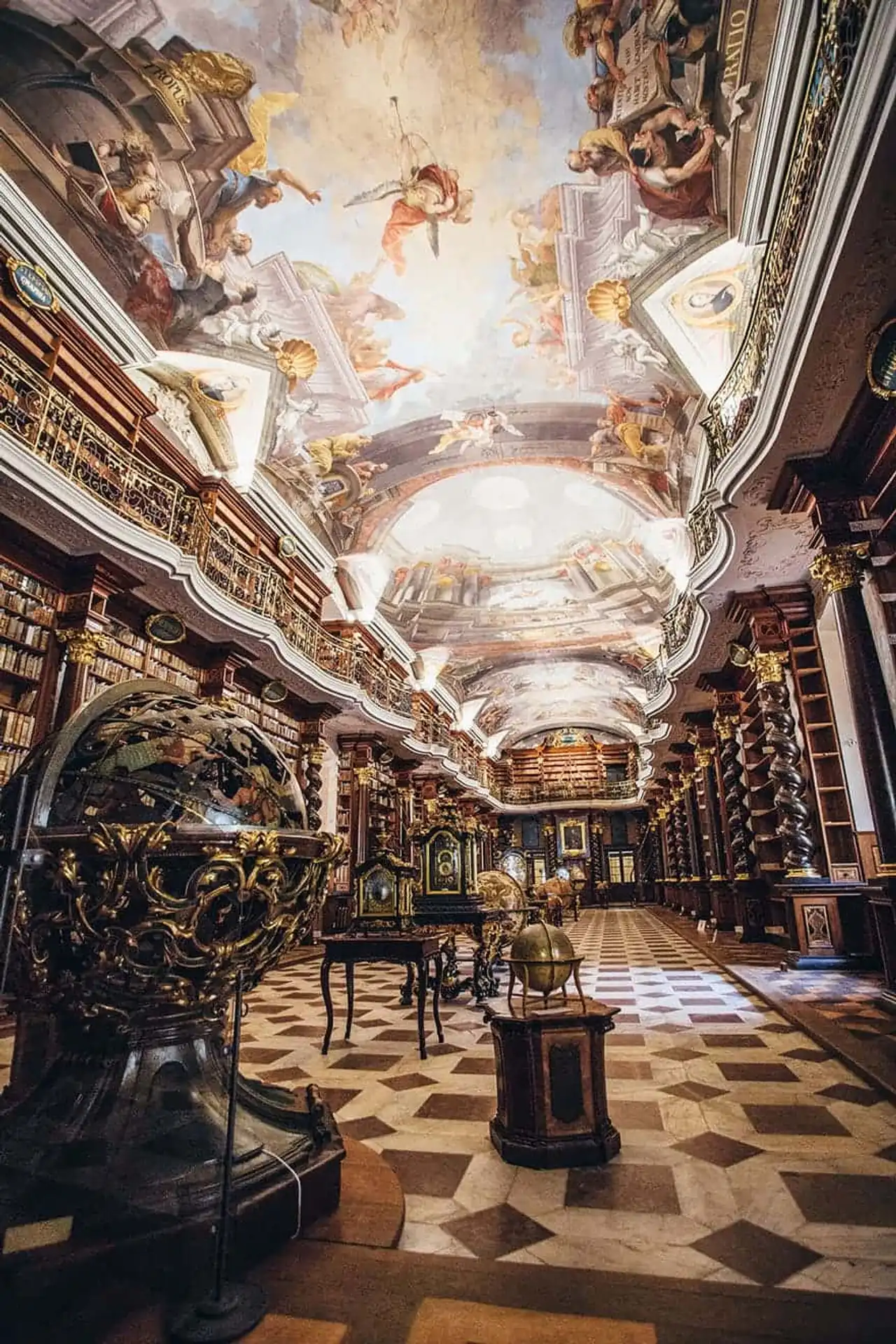
Photo credit: Flickr – Olivier Martel Savoie
The origins
In the 11th century, Clementinum was a chapel erected in honour of Saint-Clément. During the 17th century, a convent and a Jesuit college came to occupy this uncommon building successively. It was then the first college in the city and the Jesuits settled there in 1556. The small church Saint-Clément then gave its name to the architectural ensemble.
Clementinum has long continued to serve as a teaching centre, and has also hosted a printing press and became the seat of various cultural institutions. Today, the Jesuit University Library has given its place to the Czech National Library which was founded in 1781. Great names of the world of architecture participated in its transformation and renovation such as Carlo Lurago or Kilian Dientzenhofer.
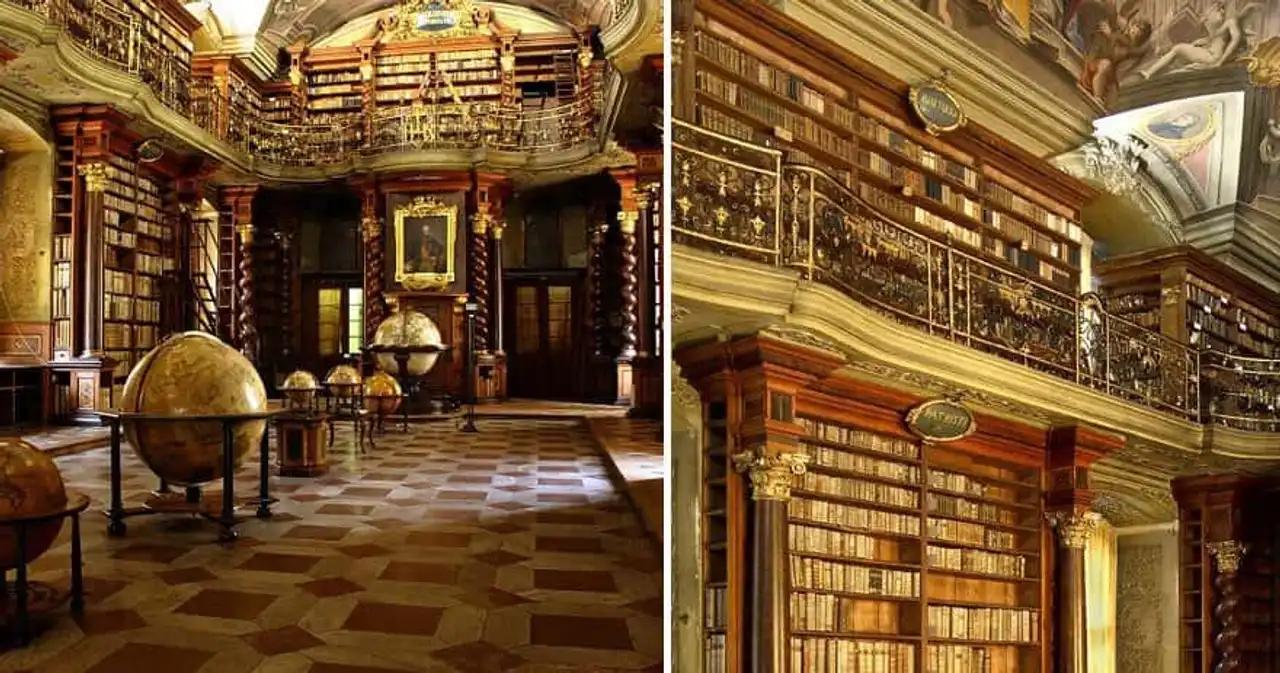
Photo credit: klementinum.com
For what is outside, it is rather austere: it is not yet a building that comes out of the earth as it is a former convent that will not cease to grow but it has nothing extraordinary. On the other hand, for what is inside, wait to take the mirettes full of them: in fact, under some tristounet appearances, the Clementinum contains real treasures .
The interior of the building is composed of :
– Multiple courses that are all decorated with sundials
– Magnificent fountains that are all connected with each other by a very ingenious irrigation system, especially for the time.
- A so-called chapel of the Annunciation where concerts are often organized (at the same time, it is the only way to discover it!)
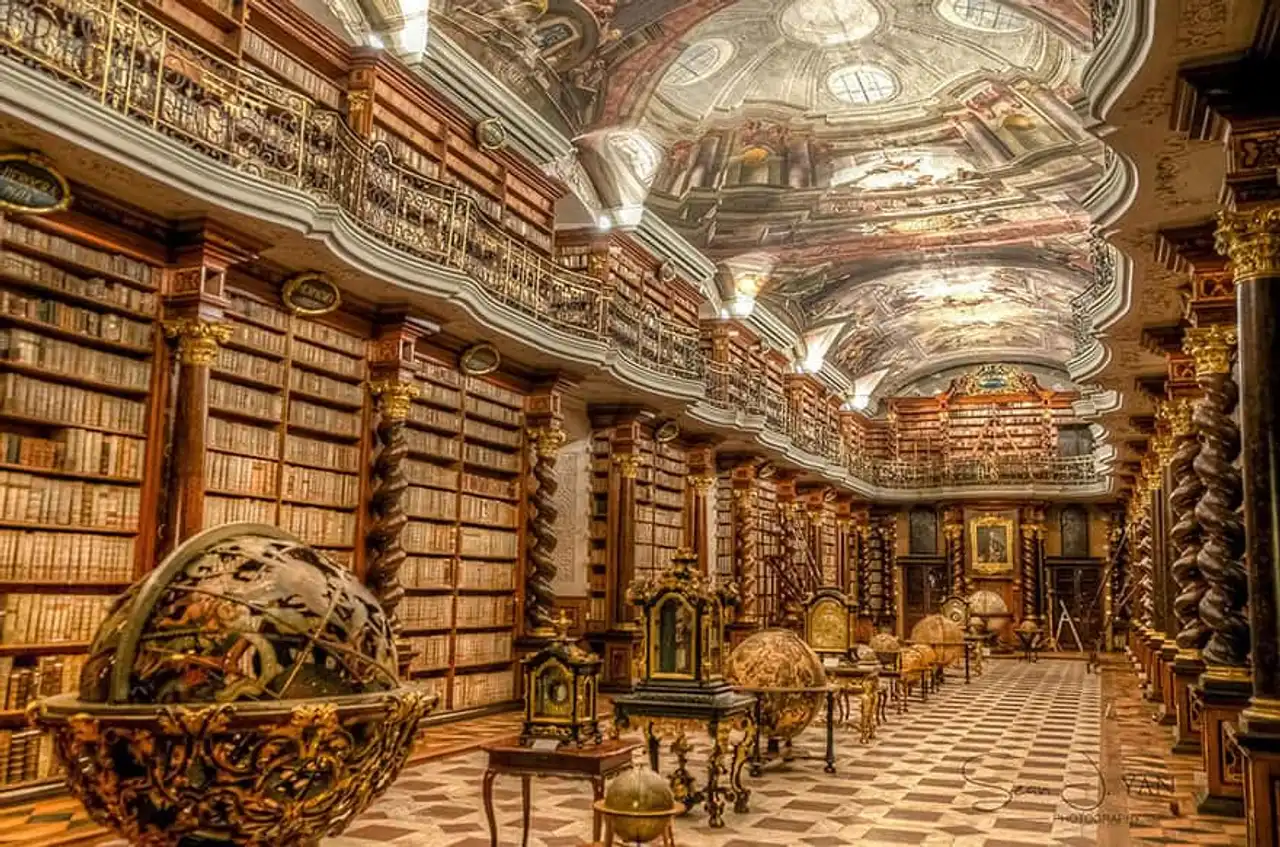
Photo credit: 500px – Sean Yan
- One huge baroque style library : it is the heart of Clementinum. It is known both for the quantity of works (more than 6 million works) and for their quality but also for the decorations that come to decorate it. You can admire the trumpets of the eye made by Jean Hiebel, a gigantic fresco that symbolizes the encounter of the Arts and Sciences. In the adjacent rooms of the library, it is possible to discover a vast collection of terrestrial globes and astronomical manuscripts. These objects are part of the mathematics room which is now closed to the public.
- A former refectory transformed into a study room: an extraordinary place since the 1989 student revolution took place here and led to the fall of communism.
- One astronomical tour (68 m high): erected at the beginning of 18 e century, no longer used it in the 20 e century but today it is still possible to see many vestiges of this era with ancient dials, measuring instruments.
The Clementinum is certainly a magical place , a perfect place for all lovers of books but also a unique decor worthy of the cartoon of La Belle and the Disney Beast.
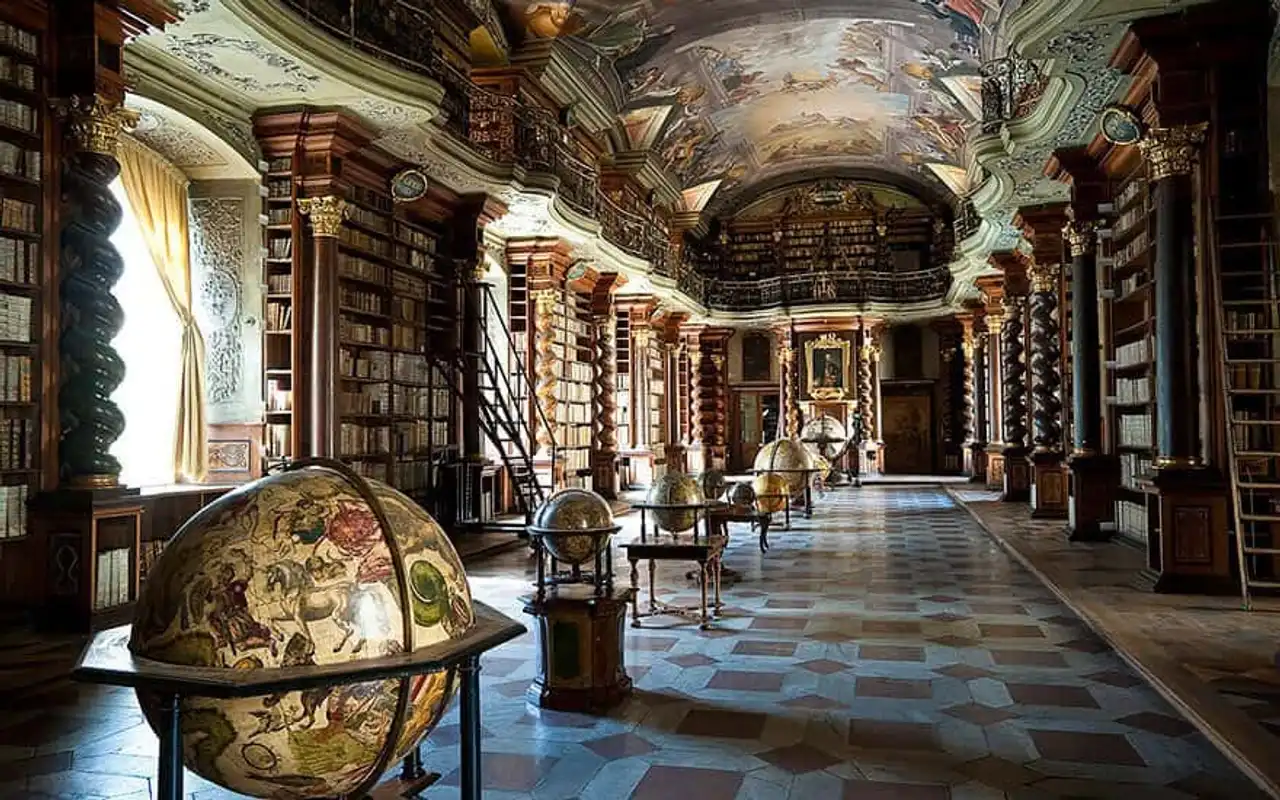
Photo credit: Flickr – ccmailb
To see, to discover, to marvel at as soon as possible!
How to visit the Clementinum in Prague?
The Klementinum is at 5, Mariánské náměstí , close to Charles Bridge.
It is accessed by lines 17 and 18 of the tram (the Karlové Lázně stops or "Staroměstská") or by metro line A (green line), station "Staroměstská".
The opening dates are: January to March: every day 10am to 5pm (last departure at 4pm) April: every day 10am-6pm (last departure at 5pm) From May to August: every day 10am to 8pm (last departure at 7pm) September: every day 10h-19h (last departure at 6pm) October to December: every day 10am-6pm (last departure at 5pm)
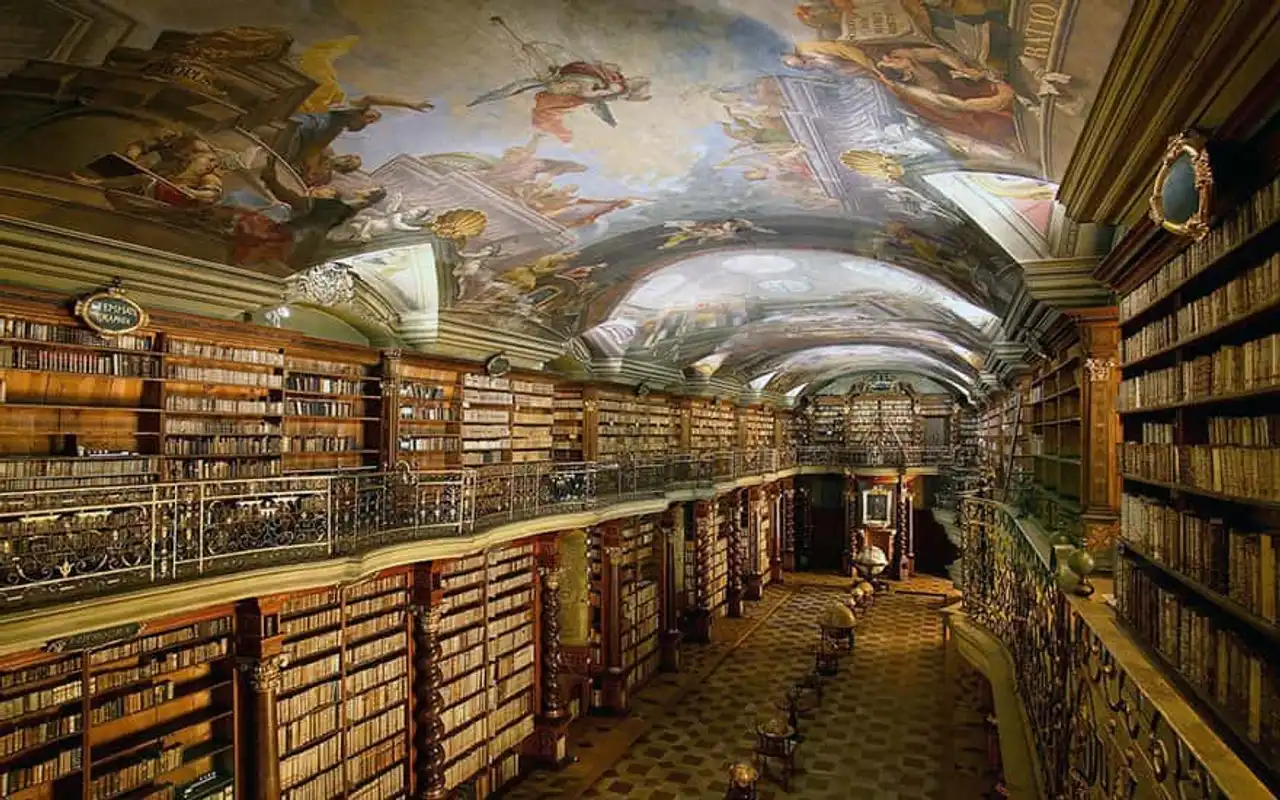
Photo credit: klementinum.com
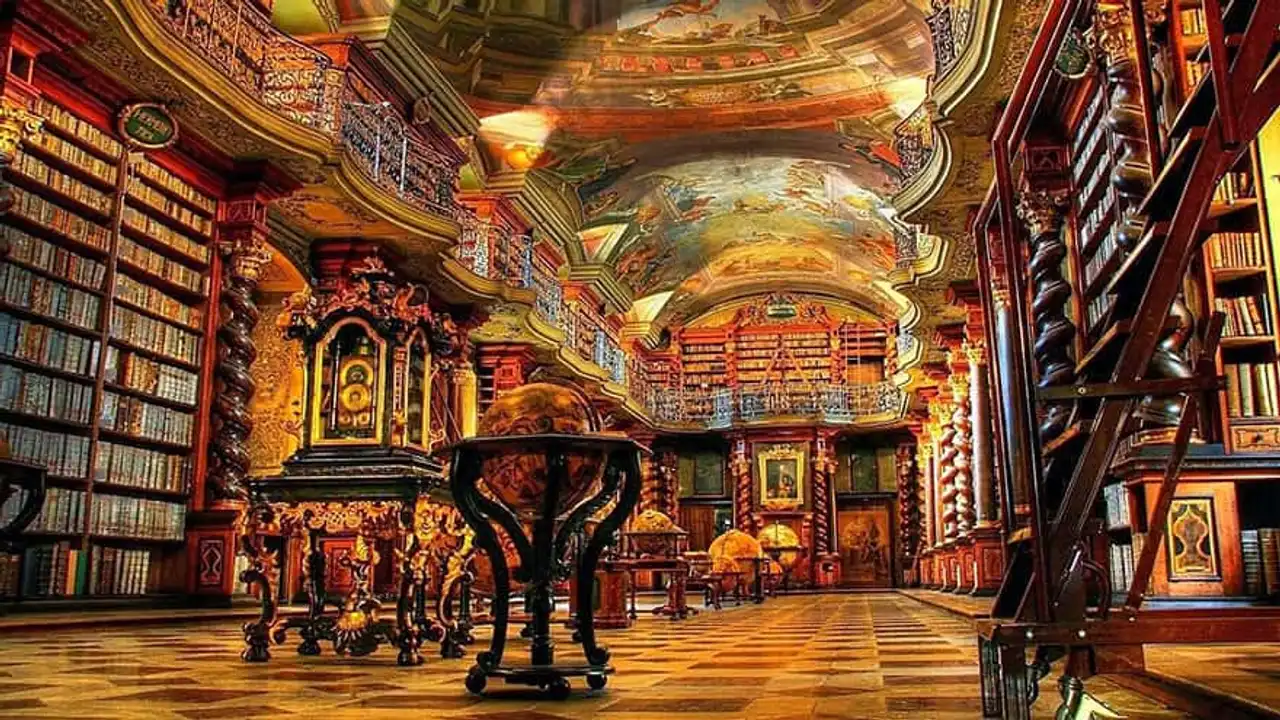
Photo credit: Flickr – LuizLouisLuix
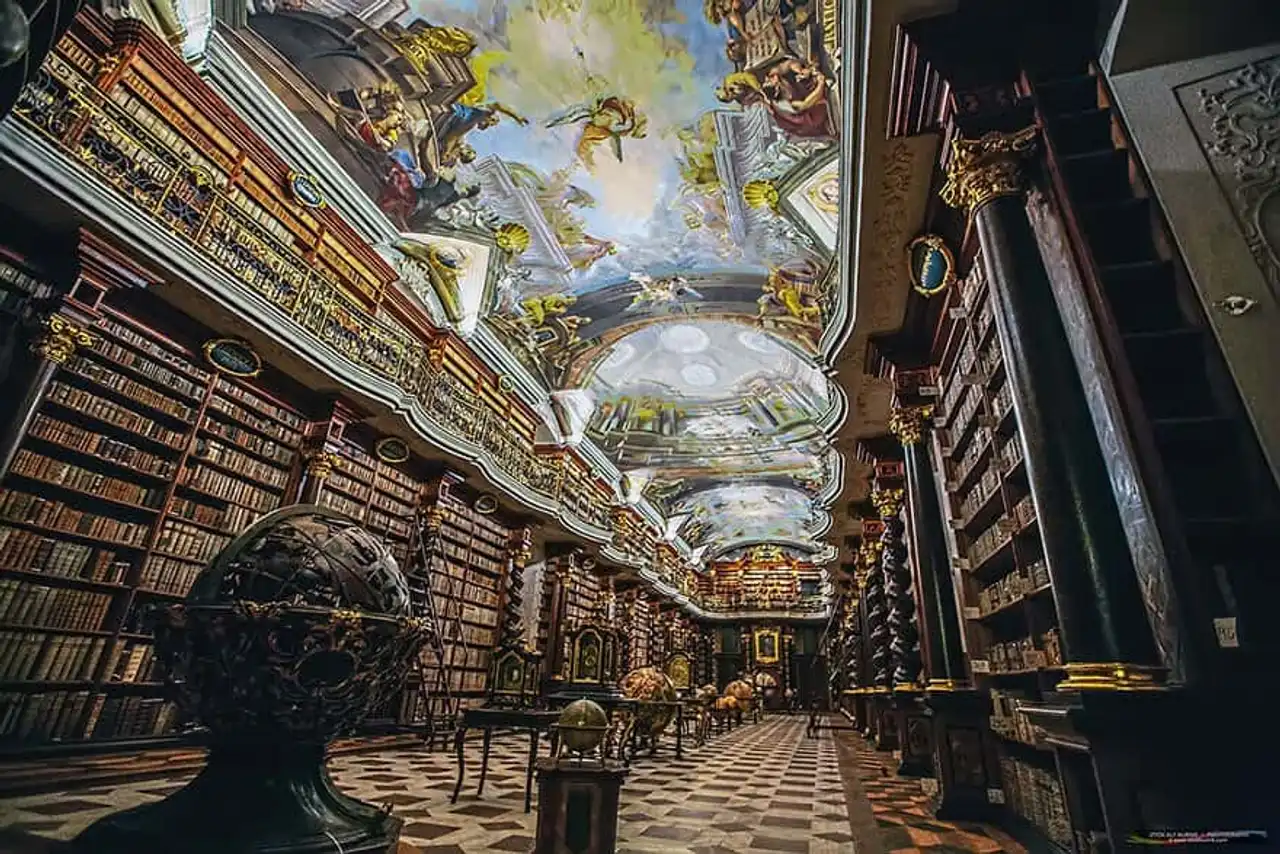
Photo credit: Flickr – Iztok Alf Kurnik





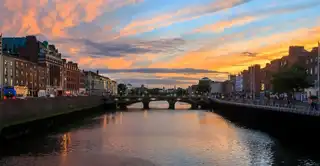
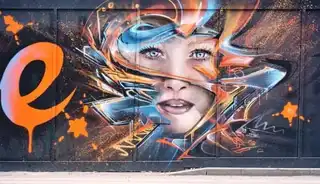
Loading comments ...